Effective risk management is essential for organizations to anticipate and respond to uncertainties. ISO 31000 provides a structured framework for implementing risk management across organizations. By following a step-by-step approach, businesses can streamline ISO 31000 adoption to fully leverage its benefits.
By adhering to ISO 31000, organizations establish a culture of proactive risk assessment and mitigation, fostering resilience in the face of challenges. This internationally recognized standard empowers businesses to make informed decisions and navigate complexities with confidence, ultimately enhancing their overall performance and success.
In this article
Part 1: What is Risk Management?
Risk management refers to the process of identifying, assessing, and controlling threats and opportunities that could severely impact organizations. It allows businesses to methodologically evaluate risks and develop mitigation strategies.
The key goals of risk management are to:
- Protect people, assets, income, and reputation.
- Enable better-informed decisions under uncertainty.
- Improve controls and operational effectiveness.
- Identify and leverage growth opportunities.
Part 2: Overview of ISO 31000 Risk Management
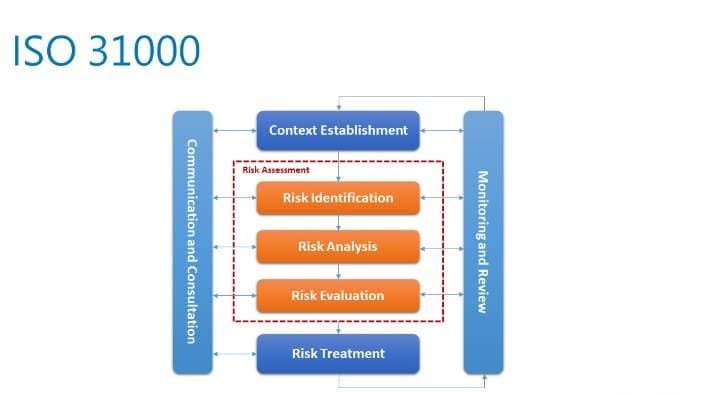
ISO 31000 is an international standard developed by the International Organization for Standardization to provide principles, frameworks, and processes for implementing risk management.
Key aspects include:
- Aligning risk management to organizational goals
- Customizing risk management methodology
- Integrating risk management across processes
- Ensuring dynamic adaptation based on context
- Fostering communications and accountability
The ISO 31000 framework provides an end-to-end approach from defining the external and internal environment to monitoring, review, and improvement.
Part 3: Steps in ISO 31000 Risk Management Process
Organizations can follow these steps to streamline the adoption of the ISO 31000 methodology:
- Establish risk management context: Consider internal and external factors while defining scope.
- Develop risk management policy: Define policy and obtain a commitment from leaders.
- Customize risk management framework: Tailor ISO 31000 to the organization's needs.
- Conduct risk identification: Use tools like checklists, analysis, and brainstorming to identify risks.
- Perform qualitative and quantitative risk analysis: Assess likelihood, impact, and other parameters.
- Evaluate risks: Prioritize risks based on developed criteria.
- Select risk treatment strategies: Consider risk avoidance, sharing, mitigation, etc.
- Implement action plans for each risk: Develop specific, measurable actions.
- Communicate and consult: Involve stakeholders throughout the process.
- Monitor effectiveness and improve: Continuously review and enhance the framework.
Part 4: Benefits of Implementing ISO 31000 Risk Management in Business
Adopting ISO 31000 risk management provides the following key benefits for businesses:
- Identifies threats early for proactive responses
- Enables informed decisions under uncertainty
- Embeds risk-aware culture across the organization
- Systematizes current ad hoc risk activities
- Optimizes resource allocation through risk prioritization
- Aligns risk management with business objectives
- Builds resilience and adaptability for long-term success
- Creates risk-based metrics for performance measurement
- Enhances compliance with regulations
Part 5: Creating a Risk Management Diagram Using EdrawMax
An effective way to communicate the ISO 31000 risk management framework is by creating a process diagram. Edrawmax is a versatile tool that enables easy development of professional risk management diagrams through its many useful features:
- Numerous diagram templates for risk management including process flow, infographics, etc.
- Drag and drop interface with an extensive library of shapes, icons, and vectors.
- Ability to import data to auto-create diagrams.
- Powerful customization tools for styling, fonts, colors, and layouts.
- Different exporting options including PDF, image files, word files, etc.
EdrawMax offers a powerful and user-friendly platform for creating risk management diagrams, providing numerous advantages to professionals and organizations. With its extensive library of pre-designed templates and intuitive drag-and-drop interface, EdrawMax simplifies the process, saving valuable time and effort.
The key steps to develop an ISO 31000 risk management diagram in EdrawMax are:
Step 1:
Launch EdrawMax on your computer and select the "Business Diagram" category from the template gallery. Browse through the available templates or use the search bar to find a suitable risk management template. Choose one that aligns with your specific needs and preferences.
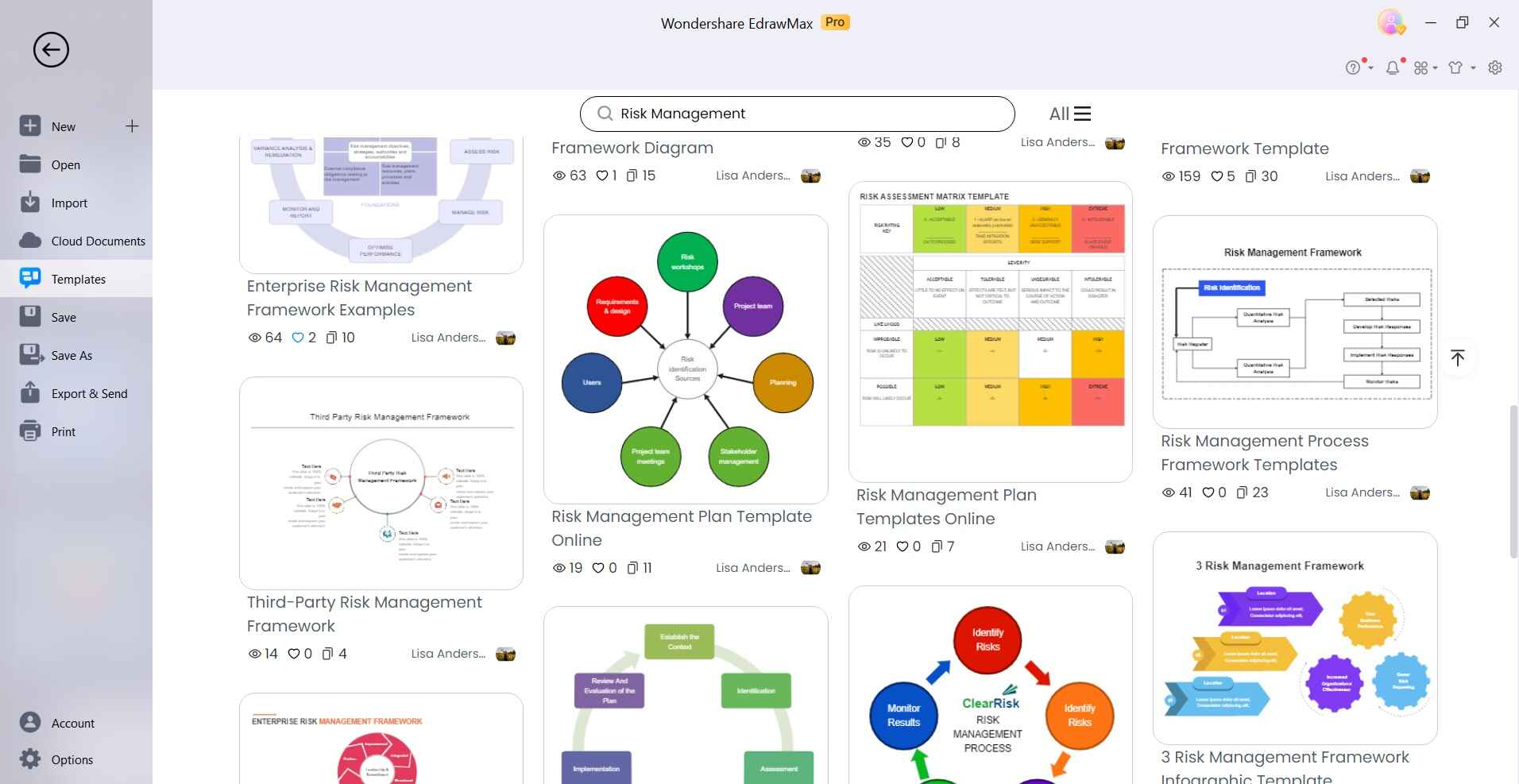
Step 2:
Once you've selected a template, you can customize it to fit your specific risk management process. You can do this by adding, removing, or rearranging shapes, as well as changing labels and text.
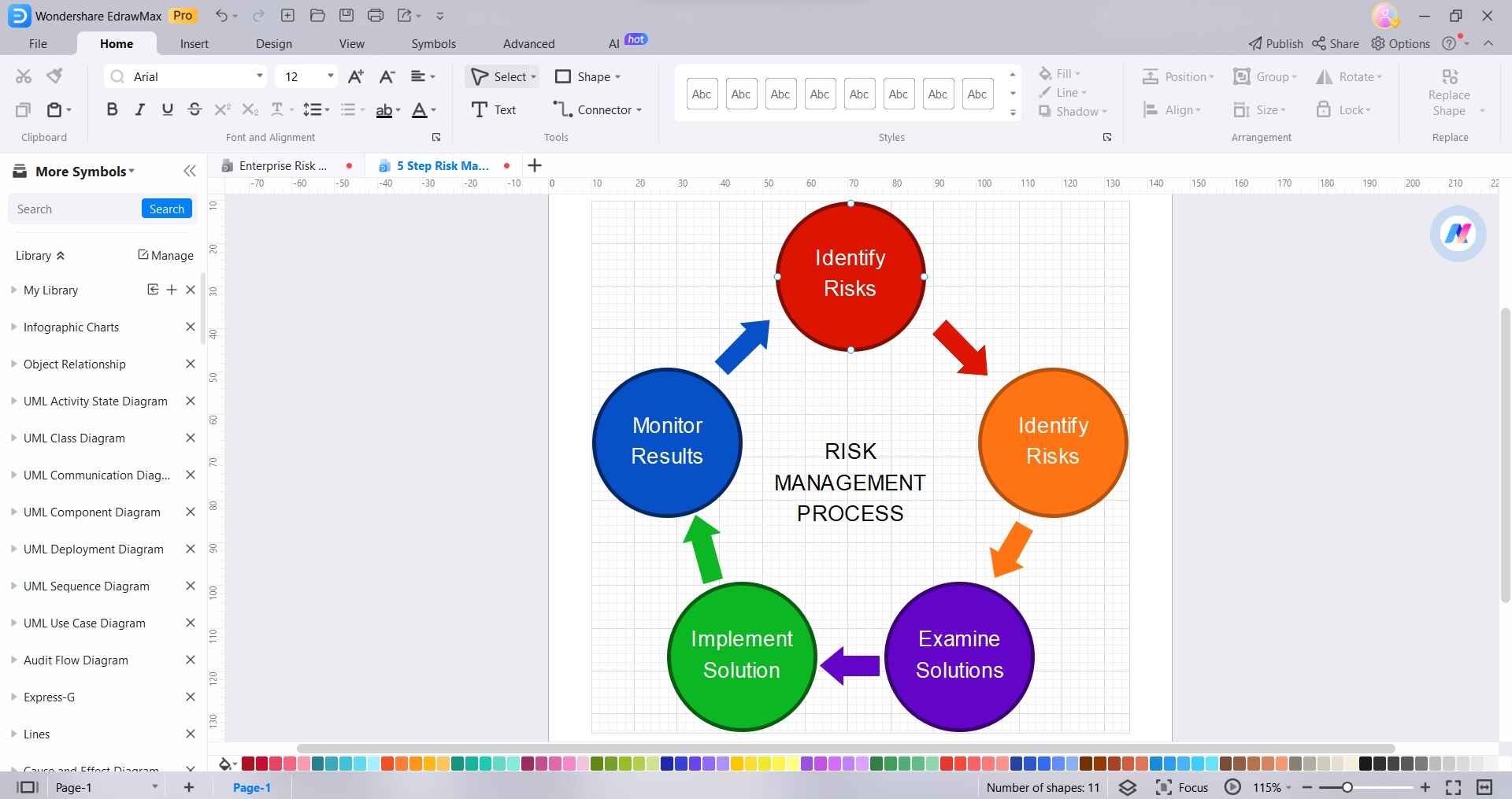
Step 3:
Use connectors to establish relationships between different elements in your risk management process. Arrange the elements in a logical flow that represents the sequential steps of your risk management framework.
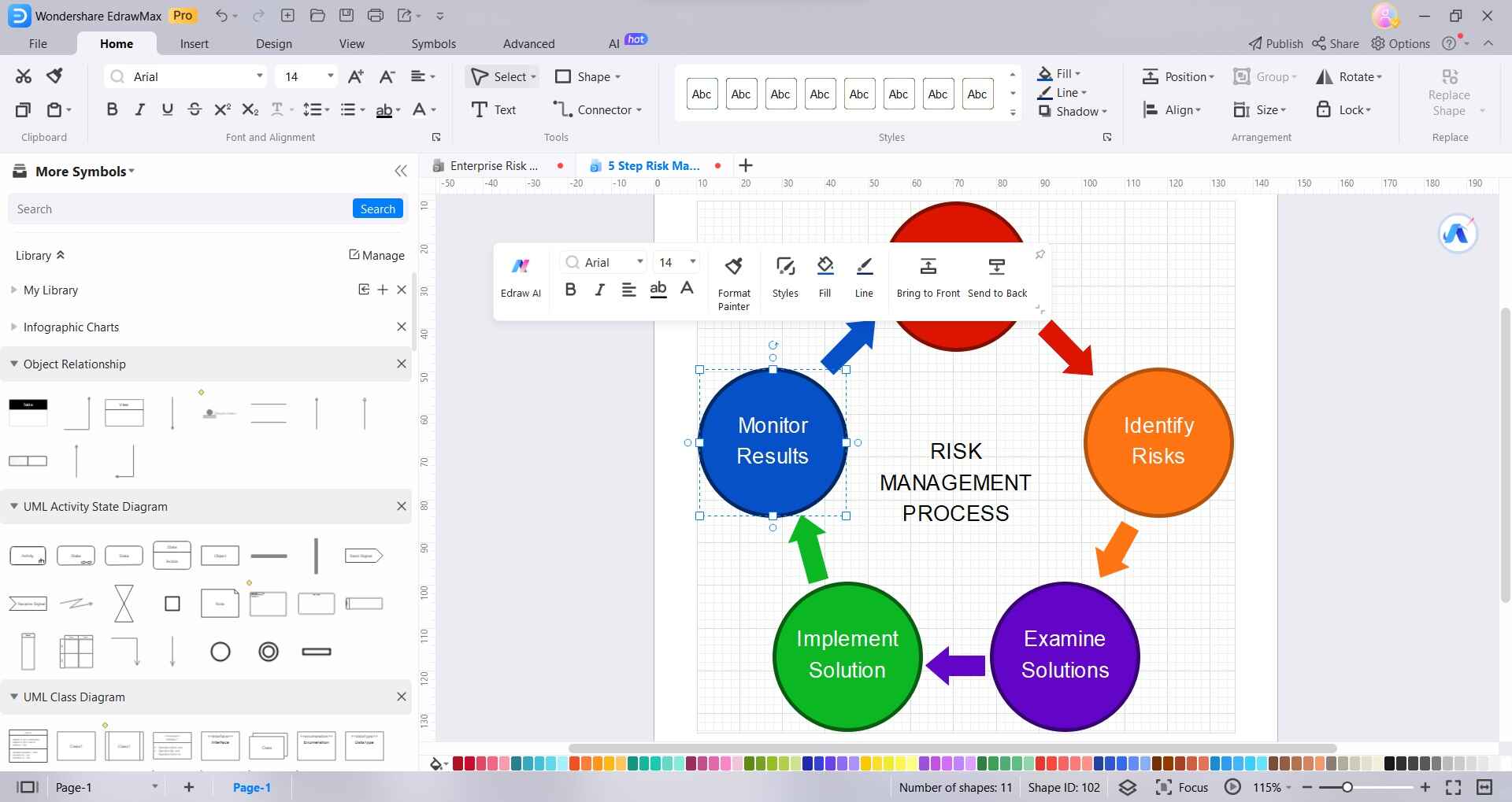
Step 4:
Use colors strategically to differentiate between different types of risks or stages in the risk management process. This can help make the diagram more visually appealing and informative.
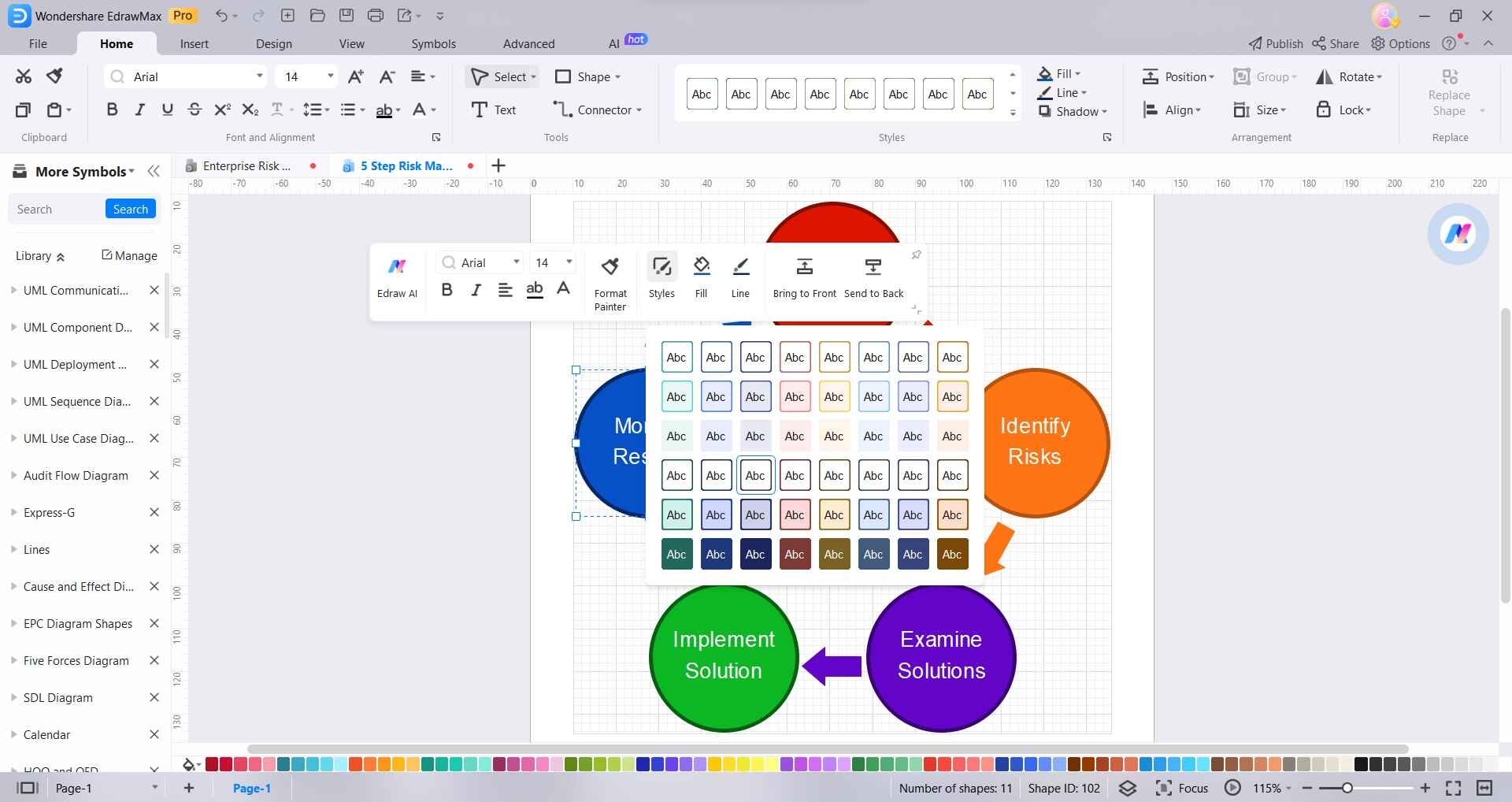
Step 5:
Save your work in a suitable file format (e.g., .eddx, .pdf, .png) to ensure you can access and share it later. If needed, you can also export the diagram for presentations or reports.
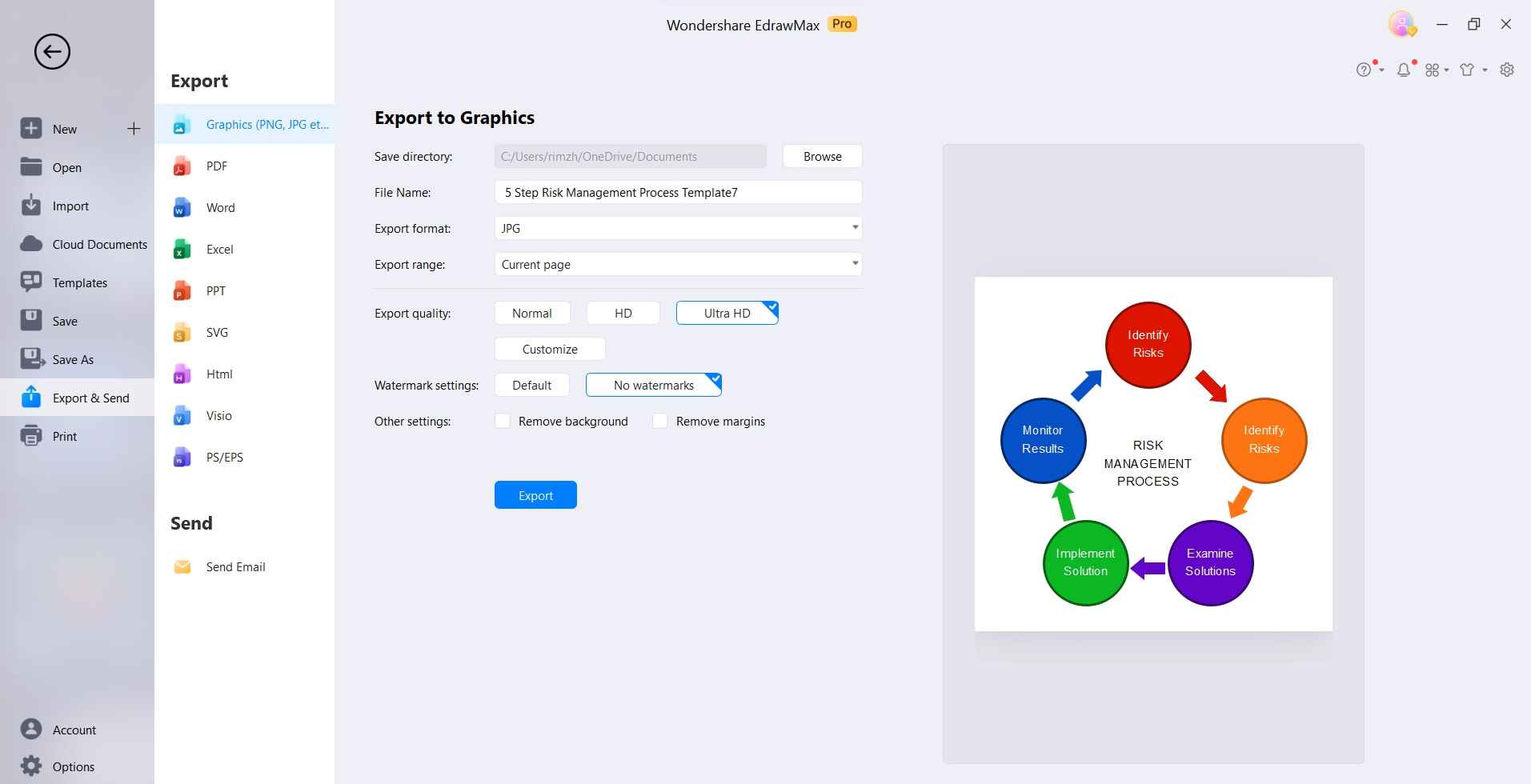
Using EdrawMax's versatile features, customizable templates, and intuitive interface can make diagramming ISO 31000 risk management efficient and impactful.
Conclusion
ISO 31000 provides a structured approach to managing risks through its comprehensive principles and framework. Organizations can streamline adoption by following a step-by-step process focused on integrating risk management across critical functions and strategic priorities. This provides significant benefits including informed decision making, process efficiency, and long-term resilience.
Diagramming tools like EdrawMax enable businesses to effectively communicate their risk management methodology to stakeholders across the organization. A planned implementation, senior management commitment, and continuous improvement in risk management can help unlock the full value of ISO 31000 for building business success.




